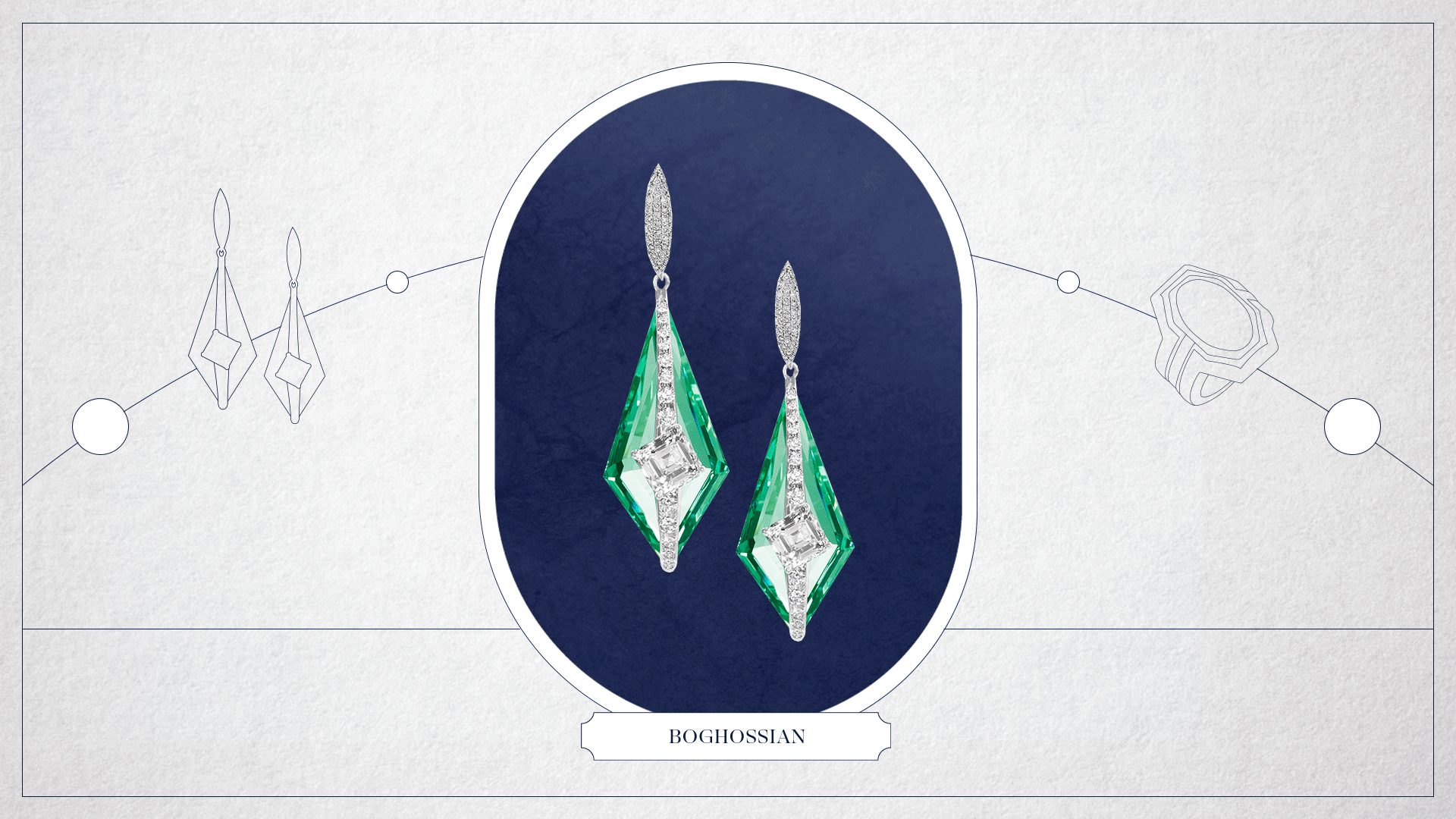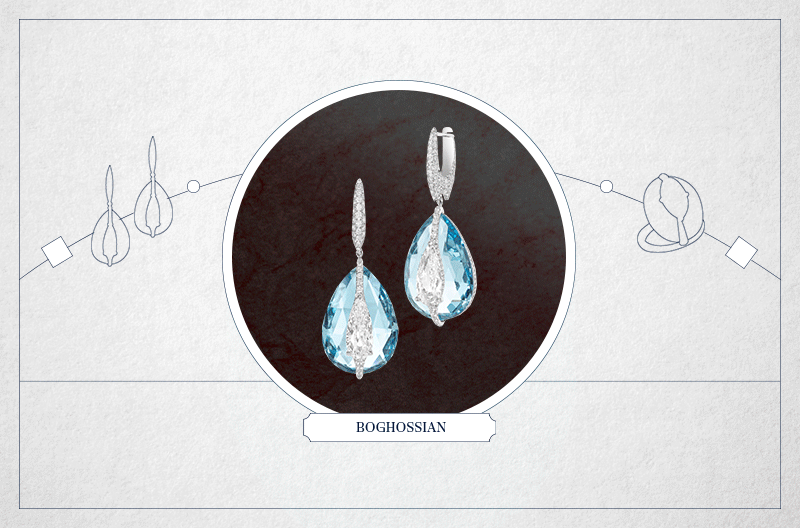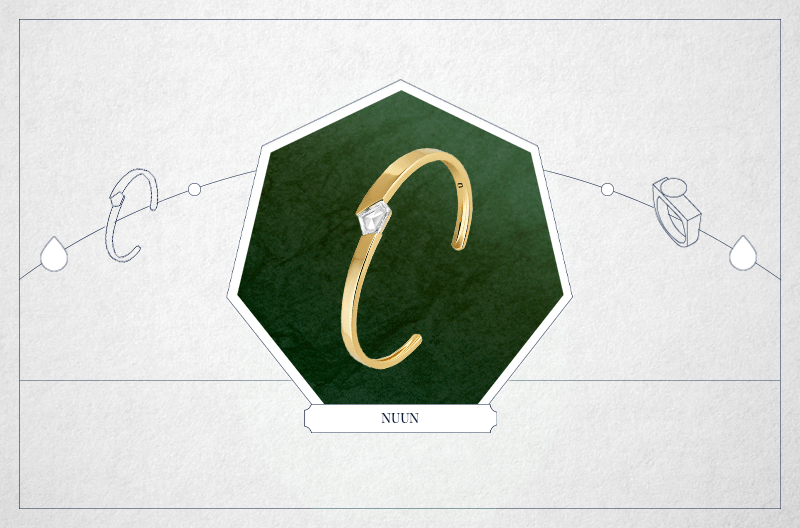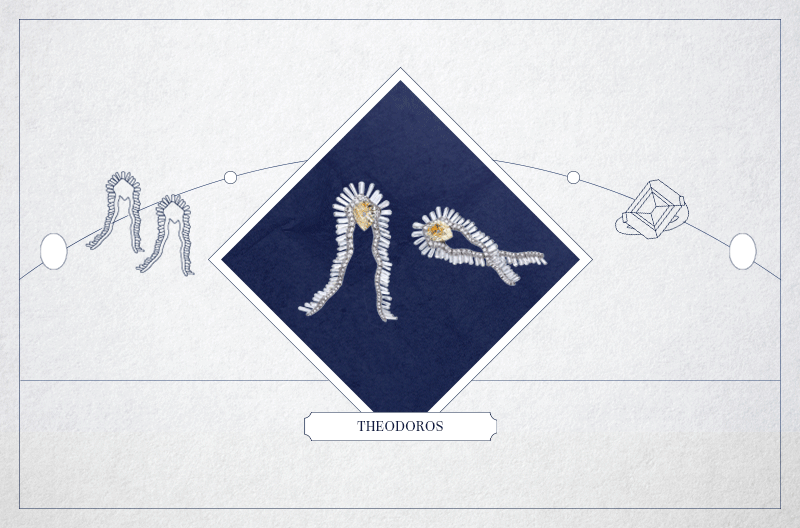The Art of Jewellery
What elevates a diamond jewel from fashion accessory to a wearable work of art? The answer requires a surprising amount of exploration into the meaning, purpose and aesthetic of natural diamond jewellery.

Defining the moment when a piece of jewellery crosses the invisible line into the territory of ‘art jewel’ is not as easy as checking requirements off a pre-ordained list. After all, art is subjective by nature. If art is determined by what an individual believes to be beautiful or by some measure of an object’s power to evoke feeling – as the dictionary definition suggests – then prescribing the parameters of an art jewel becomes even harder. From my personal experience of high jewellery, however, there are some characteristics that are reliably present in all the ‘art jewels’ that appear in my mind’s eye.

Before I outline these traits, it’s important to consider the different types of jewellery. Some creations respond to transient fashion trends and provide their wearer with a token of the here and now through accessible materials, styles and prices. In contrast, high jewellery is often more creative, less tied to the trends of the day, requires important gems and more unique artistry using traditional handmaking skills over mass-production methods. In fact, most high jewellery collections are so complex they take two or three years to complete. Finding a perfectly matching suite of fancy-coloured natural diamonds for a single necklace may take decades to source and require almost unlimited patience from high jewellery maisons. In is in this latter realm that truly artistic pieces flourish.
Of course, the joy of jewellery is its breadth and diversity, and its ability to respond to the different needs of the modern woman. Thanks to its scope, natural diamond jewellery can be an accessory, fashion statement, investment and, especially in the case of jewellery art, a reflection of one’s sophistication, taste, style and refinement. And it’s not only women who seek out these treasures; men are just as likely to purchase art jewels and appreciate their uniqueness, even if they don’t personally wear them like Maharajas did it the past.

To me, jewellery is a stand-alone art form, but also a blend of many different art forms like sculpture, painting and handcrafting. Elements must be taken from each, like the forming of precious metals into three-dimensional shapes seen in sculpture, the ‘painting’ of coloured canvases using natural diamonds and gemstones, and the ability to combine all these aspects in perfect harmony. Jewellers must also have the power of imagination to dream of a piece and then bring it to fruition. Many will start with a gouaché drawing – another artistic talent in a high jeweller’s arsenal – which uses opaque water-colour paints to capture the spirit of a piece and commit it to paper before it is made. It is certainly the case that an art jewel will go through more steps, from the moment inspiration strikes to its point of completion, compared to a fashionable jewel that must quickly meet the desires of the market.
Now that I have explained the context, I can share with you what I believe are the defining traits of an art jewel. Firstly, it is always unique and, often, requires specialised techniques that have been perfected or patented by a particular brand. A wonderful example of this is Swiss jeweller Boghossian and its signature Kissing Collection, which revolves around setting one stone on top of another to create a whole new spectrum of colour and sparkle. Art jewels are typically brought to life with unusually complex and technically proficient feats of craftsmanship, as well as unusual designs that play to a theme or find inspiration in a specific genre, architecture, city or historic figure. Next, an art jewel can be singled out by how labour intensive and time consuming its creation is. Take the Greek designer Theodoros, whose ‘Apache’ earrings required nine weeks of bench-working, as well as 12 months to source the perfect amount of slender, pencil-cut natural diamonds.

These types of jewels also have a habit of telling you a lot about a designer, their inspirations, beliefs, ideas and singular approach to craftsmanship. Pieces by Viren Bhagat, for example, reflect not only his cultural roots as an Indian designer, but also his meticulousness as a creator. His well-regarded love of sketching results in jewels that are architectural in nature and show a clear pathway from drawing to finished piece. Similarly, Santi Jewels, led by Krishna Choudhary, offers museum-worthy pieces that offer sparks of history, fuelled by Choudhary’s own education in Islamic and Indian Art History, as well as hints of Art Deco design, Milanese craftsmanship and Mughal majesty. It is only art jewels that can encapsulate such layered and meaningful stories.
Finally, the character of an art jewel is often captured in unusual materials or unusual combinations of materials that exist in unexpected harmony. Look to German jeweller Hemmerle and its use of iron and copper, alongside diamonds, gold and jade, as an example of this experimentation in action.
While I have my own personal opinions on the power and beauty of diamond jewellery, I invite you to form your own ideas about what is and isn’t an art jewel. For you, an art jewel may be rooted in investment or the size, quality or colour of the natural diamonds it contains. For your neighbour, it may be the blend of unusual materials and the story it evokes, whether that’s centred on the past, present and future. Perhaps what elevates a jewel to a wearable work of art is the passion that it conjures in an individual… if that’s the case, then a single diamond solitaire, passed from one generation to the next, could carry all the sentimental weight one needs claim possession of a piece of art.
